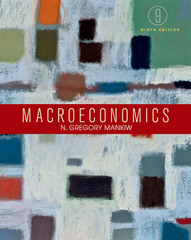Question
Remember that for a profit-maximizing firm, marginal benefits are measured by marginal revenue. Suppose a perfectly competitive firm's marginal revenue is $10 while its marginal
Remember that for a profit-maximizing firm, marginal benefits are measured by marginal revenue. Suppose a perfectly competitive firm's marginal revenue is $10 while its marginal cost is $11. Under these circumstances the firm:
Question 1 options:
| needs to know the market price before it can determine whether it is maximizing profit. | |
| is not maximizing profit and should increase output. | |
| is not maximizing profit and should reduce output. | |
| is maximizing profit and should not change output. |
Question 2 (2 points)
Restaurants offer early bird discounts for customers ordering before 6 p.m. If the reason for the discount is price discrimination, then we can conclude that:
Question 2 options:
| people who can eat before 6 p.m. have a less elastic demand for restaurant meals than the general public. | |
| there is no difference in elasticity of demand between the people who can eat before 6 p.m. and those that cannot. | |
| elasticity of demand has nothing to do with price discrimination. | |
| people who can eat before 6 p.m. have a more elastic demand for restaurant meals than the general public. |
Question 3 (2 points)
Comparing an oligopolist and monopolist:
Question 3 options:
| the oligopolist can keep their profits into the long run but the monopolist cannot. | |
| Both the oligopolist and monopolist can keep their profits into the long run. | |
| the oligopolist cannot keep their profits into the long run but the monopolist can. | |
| Both the oligopolist and monopolist cannot keep their profits into the long run. |
Question 4 (2 points)
In Plant City, Florida there are many small family-owned strawberry farms. Most farms are generally small and the strawberries produced by each farm are close to identical. Each farm is too small to affect the market price of strawberries; so whatever the market price is, that is what they have to sell their strawberries for. This market situation characterized by many sellers each offering an identical product, and therefore having no control over the market price, is known as:
Question 4 options:
| pure monopoly. | |
| monopolistic competition. | |
| an oligopoly . | |
| perfect competition. |
Question 5 (2 points)
Monopolies can exist due to:
Question 5 options:
| ownership of a natural resource. | |
| the existence of a patent. | |
| all of the above. | |
| lower average total costs for one firm as compared to multiple firms. |
Question 6 (10 points)
Match each term to the correct definition.
Question 6 options:
|
|
Submit Quiz0 of 6 questions saved
Step by Step Solution
There are 3 Steps involved in it
Step: 1

Get Instant Access to Expert-Tailored Solutions
See step-by-step solutions with expert insights and AI powered tools for academic success
Step: 2

Step: 3

Ace Your Homework with AI
Get the answers you need in no time with our AI-driven, step-by-step assistance
Get Started


